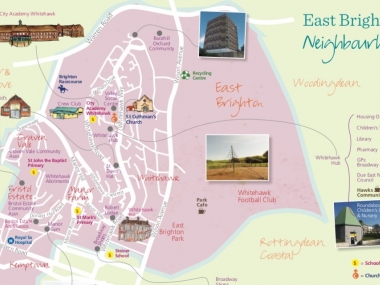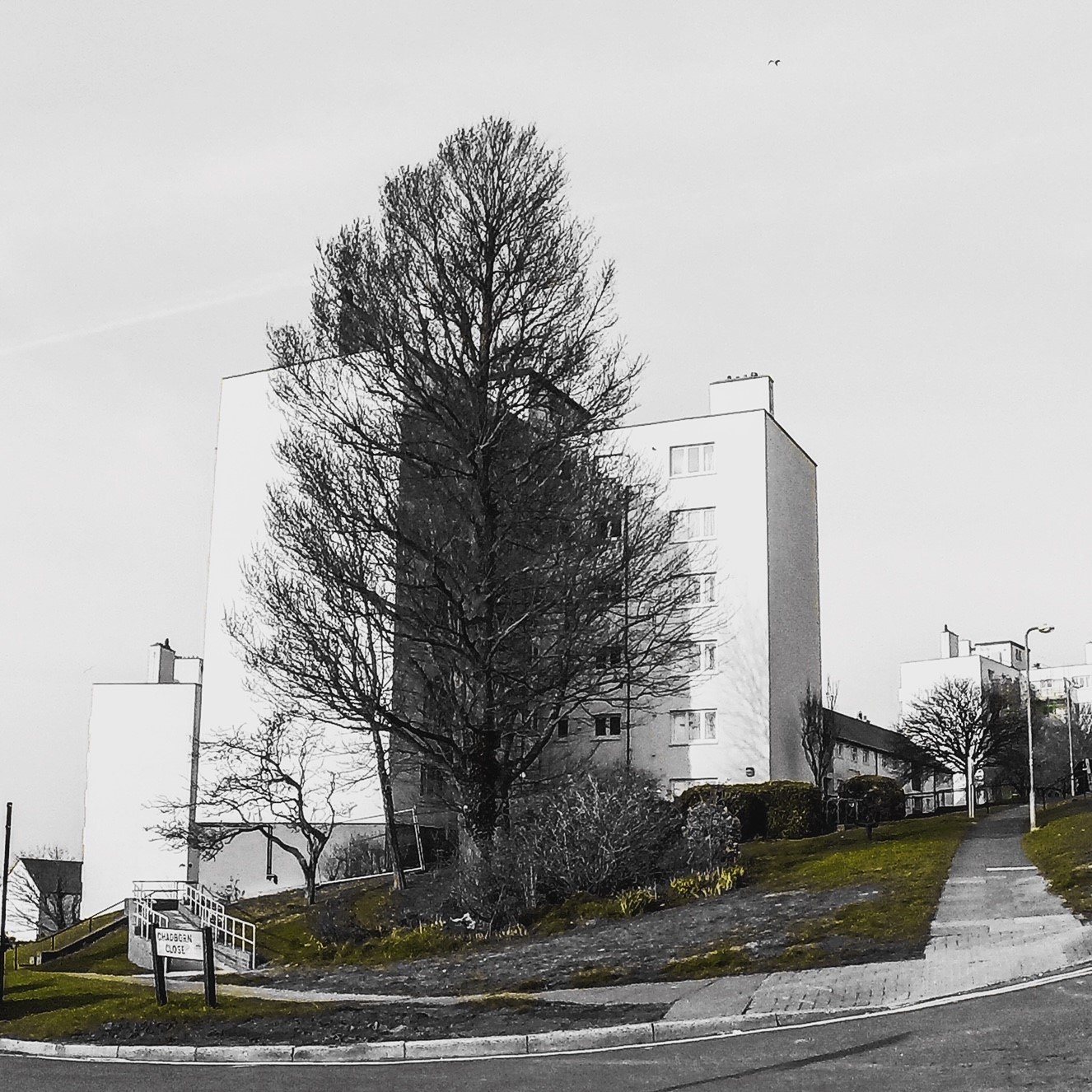Brighton (UK) adopts good practice from the impressive NGO House in Riga (LV)
Edited on
02 April 2021A somewhat dreary day in a municipal office was, unbeknownst to me, a significant one in the form of an email with the Urbact Project III call out for partner cities. Having previously failed with a strong collaborative application to Horizon 2020, talk amongst the office was that UK would be out of vogue as partner cities, particularly with the B(rexit) word casting a shadow over future EU collaboration. Optimistically, I read through the projects in this round and stumbled on ACTive NGOs. NGO House, Riga, Latvia. The only thing I knew of Latvia is that I grew up imitating a cult Latvian player’s (Marian Pahars) goals on the local green – Marian played for my beloved team, The Saints, in the late 90s.

Riga NGO House’s description was impressive – talk of municipal-NGO collaboration and a physical space in which these two spheres come directly and favourably into contact. I submitted an expression of interest and supporting statement for Brighton & Hove – specifically East Brighton – to become a partner city in the project. More experienced and pragmatic colleagues told me it would likely amount to a ‘thank you but you have not been successful’, akin to the countless job application rejections received via cold generic email. However, to my delight and surprise, the lead partner, Irina, sent a very different kind of email saying that they were interested and in two months planned to visit Brighton & Hove to find out more about East Brighton and its community assets.

A visit from Levente, Irina and Ilona followed – who were impressed by the grassroots spirit of local community champions and repurposed community assets – with Brighton & Hove making a late entry into the ACTive NGOs family.
‘This will amount to nothing…it’s been done before’, these are the words I heard at the final workshop before the East Brighton Neighbourhood Action plan was produced, a culmination of three years’ work alongside and within the community, involving a heated discussion and hundreds of innovative ideas and solutions. This was my second day in post at the municipality and the words were from a veteran community activist within Whitehawk, East Brighton. I have since found that comments like these lie at the basis of the relationship between the Bn2 Five (East Brighton postcode) communities and the municipality. There has been a recent history of well-intentioned but inherently top-down paternalistic community initiatives and previous iterations of neighbourhood plans that often left the key stakeholders, the local people, at the periphery of the discussion and removed from the decision making. Therefore, building and maintaining strong relationships is essential. Trust between the municipality and local communities is hard earnt and can quickly thaw in East Brighton and rightly so. Decades of embedded deprivation and palpable inequality have changed little despite the grand multi-million-pound initiatives under New Labour and a succession of local administrations from across the political spectrum over the past four decades. Systemically, East Brighton is a forgotten, maligned and demonised part of the city – perpetuated by sensationalised clickbait local media articles and views of those who have never stepped foot there themselves. The strength of BN2 Five lies within the community; community champions, activists of all denominations and community assets that reach the most isolated and fill the growing gaps where the municipality cannot. These community champions know their communities, work and (predominately) volunteer countless hours of their time to benefit others in their local area and make it a hub of connection, neighbourliness and an understandably hesitant place to collaborate significantly with municipal teams.
What sprang to mind when reading through NGO House good practice description, was how that space formed a relationship between the municipality and the city’s NGOs. They went further than just offering a free space in a former school for groups to meet, debate, create and showcase – the municipality offered regular training to support NGOs to be sustainable and inclusive. This is not to say that strong partnerships between the municipality, NGOs and communities in East Brighton had not been established to date – far from it – but they were either on an individual level or differed by municipal service by service. In other words, these relationships remain fragile and based on the strength of key individual relationships rather than strategic and systemic partnerships. This approach, although key, has been unable to breach the deeply-embedded inequalities that remain a constant hum without a vertically-integrated collaborative approach established at NGO House. The real appeal from NGO House is the combination of the strategic and personal, mixture of collaboration and space (physical and figurative) for independence. Visiting NGO House and hearing from Zinta, NGO House Project Coordinator further cemented possibilities for successful transfer from Riga to East Brighton. Our cities were not so different; the need for grassroots voice, independence and as and when support mirrored the needs back in BN2 Five.
From the outset, it was clear that a straightforward transfer would not be realistic – the dispersal of community assets across East Brighton – under different ownership and leases, the lack of available municipal funds to create an East Brighton NGO House and respecting the identity of those NGOs that run community assets and not to undermine their independence and need within the community. During the initial visit made by Irina, Ilona and Levente, we made sure to show the range of community assets and their distinctive purposes and unique relationships with residents, NGOs and municipality. Ownership and governance model differences across these assets also complicate a simple transfer from NGO House. Rather, the focus has been on how the vision of NGO House be replicated in East Brighton – an asset-based approach, through the sharing of skills, co-designing events, improving community-wide communications and marketing and ultimately establishing clear and equitable partnerships between the municipality and NGOs and community members. In ULG meetings since and in between transnational visits, talk of a community-led representative for East Brighton has been mooted. Bn2 Five community forum or representative trust is being discussed by local members and this is an ongoing project that will continue to be explored long after the end of the ACTive NGOs project, given the complexities at play.
I hope that through our involvement in this transnational learning network, we have learnt that despite the wider geopolitical climate (Brexit, rise of populism and nationalistic self-interest) both cities can continue to learn from each other and forge strong bonds into the future. There is a sense that the ULG members of East Brighton – particularly those involved in the transnational visits - have inspired our friends in Riga some ways to be creative, fun and community-led in their approaches going forward.
For East Brighton, we are certainly not there yet with a representative Bn2 Five body – stakeholders are rightly cautious about this. Previous attempts - promises and statements quickly come to mind, and this continues to prompt some reluctance and cynicism. This is coupled with who has been driving these changes – namely municipal officers (myself included) and this is where the grassroots - local residents namely - amongst the ULG should be given the opportunity to establish, lead and determine the course of such a governance structure. Accordingly, the Bn2 Five body is a provocation – a starting pistol on the future of community governance within East Brighton.
Instead of discussing community governance in microscopic detail, there has been a focus on action – the production of the What’s On in BN2 Five Guide for Summer 2019, with the Facebook group now a mecca of activity and upcoming events posted by NGOs, municipal staff and local residents. The tailored social media training and Zoom hosting training workshops, facilitated by local experts in virtual marketing and content, has given built further capacity to enable community groups to lead on grassroots communications and events planning. The move to virtual communication prompted by the COVID-19 pandemic saw municipal officers, like me, leading and hosting meetings – often inadvertently managing the content and agenda of those sessions. The training will give the opportunity to local residents to coordinate, manage and lead the conversation rather than the other way around.
The involvement in ACTive NGOs has opened up a critical space to observe the current state of play in East Brighton and has certainly reinvigorated many East Brighton ULG members through this process so far. From a personal point of view, it has highlighted the need for a clear vision that can act as a catalyst to bring all stakeholders – active, inactive and dormant – together to benefit all community members. It has also reiterated of my need to be aware of my role, as a municipal officer, not part of the community, but a figure who can – hopefully – continue to build trust and meaningful partnerships in the community whilst lobbying for cultural and systemic change within the municipality to push for sustained change that can challenge the embedded inequality in East Brighton. The hope is that this can be helped through the transfer of learning and innovative practice from NGO House and our other partner cities – we shall wait and see the real legacy through the project and beyond.

Written by Tom Goodridge
 Submitted by z.biteniece on
Submitted by z.biteniece on
